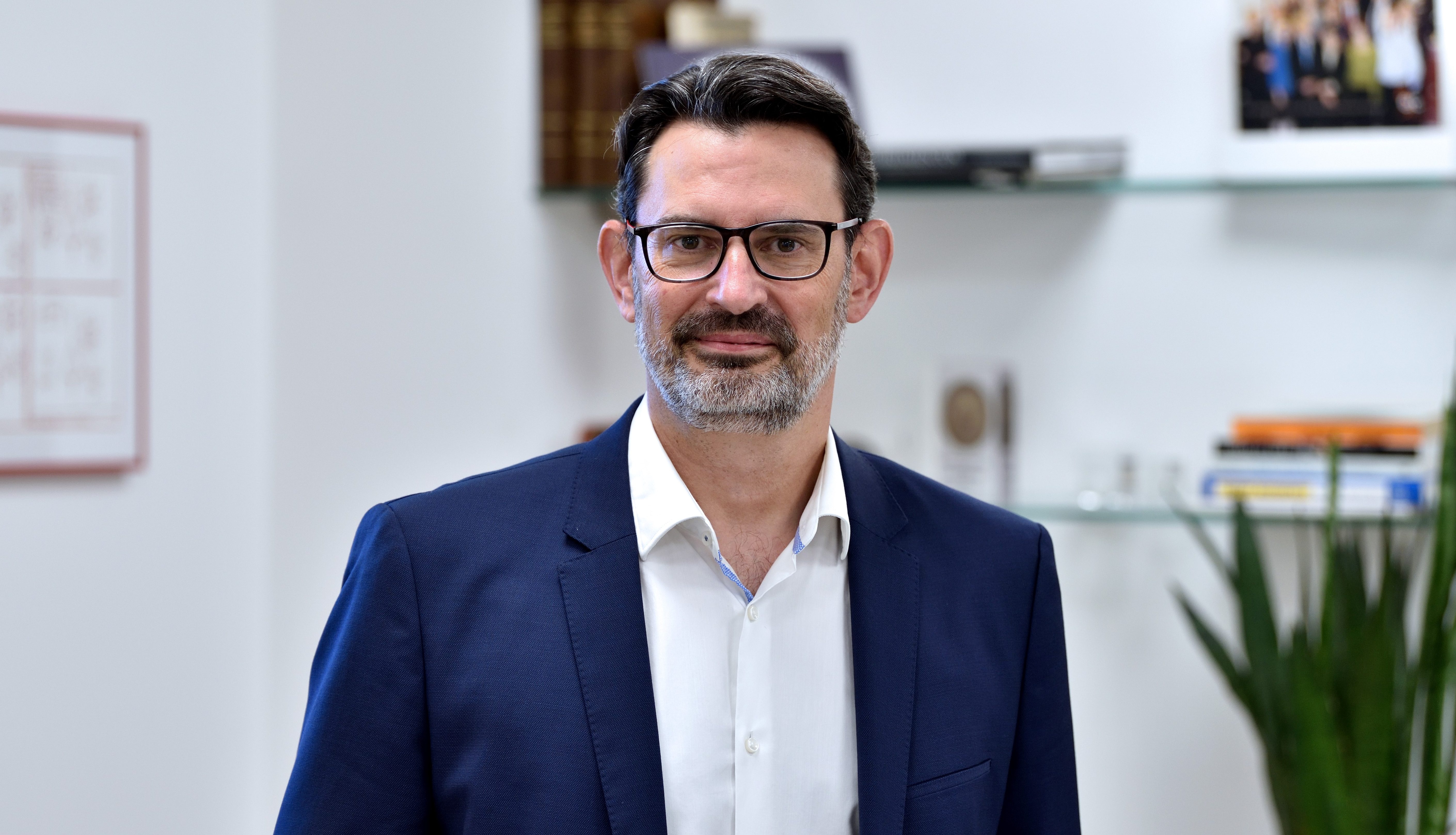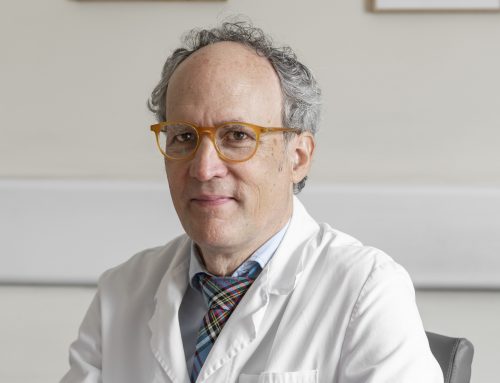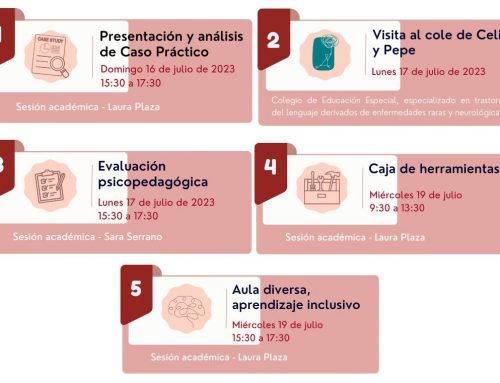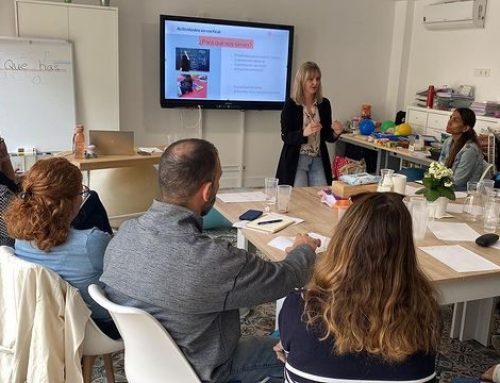- Director of the Center for Neurodevelopmental Disorders at King’s College London, he investigates to understand the origin of these disorders.
- «Finding a cure for neurological diseases is not impossible; it is a matter of effort and resources»
- Marín participates in the IV Neuroscientific Conference of the Fundación Querer
Óscar Marín is a professor of Neuroscience and director of the Center for Neurodevelopmental Disorders at the prestigious King’s College in London (United Kingdom), where he also works as a professor and researcher. His research aims to understand brain development and the origins of neurodevelopmental disorders such as Autism Spectrum Disorder (ASD), epilepsy, and schizophrenia.
This week, the renowned neuroscientist travels from London to participate in the IV Neuroscientific and Educational Conference of the Fundación Querer, where he will explain the implications of critical periods in brain development. “It is an opportunity to help and contribute in some way to the understanding of how disorders of brain development occur, what consequences they have, and what we are trying to do to treat them,” he says.
Q: What are critical periods in brain development?
R: The human brain’s most essential feature is that it takes a long time to develop. The big benefit is that our brain is incredibly malleable throughout the entire developmental period, both inside and outside the womb, and can adapt for better or worse. There are critical moments throughout this period when specific processes occur, and it is crucial that everything goes well and does not vary from the normal course. These are distinct periods, and we now know that they are linked to developmental issues. For example, in the final trimester of our life in the womb, we begin to develop most our brain’s neural connections. This will have a significant impact on how our brain functions in the future.
Q: What factors affect brain development during these periods?
R: To construct the brain, two things are required: genetic information and environmental influences. Although genetics account for approximately 80% of the risk of many neurodevelopmental problems, everything else that happens to us or our mothers while we are still in the womb will have a significant impact on brain development. Furthermore, because genetic information is not capable of encoding every detail of how our brain is constructed, there is a chance factor in biology, which explains why some people with the same mutation in a gene do not develop the same clinical spectrum or why, in two twins, one develops autism and the other does not, despite having some developmental problem.
«The better we understand the specific cause of the disease, the easier it will be for us to intervene, and the more beneficial the evolution of these children will be.”
Q: What happens if, during these critical periods, there is no proper brain development?
A: The most significant advancement in this discipline over the last 20 years has been our growing understanding of the genetic bases of our diseases and the genes associated with them. Now, we are attempting to comprehend the function of these genes in the brain-building process, so that we can identify the precise phases of brain development affected by each of these diseases. This is crucial from the perspective of the human brain, as the brain is a highly complex, plastic biological structure that will attempt to compensate for these deficits. Occasionally, it is not sufficient, and we observe conditions that we consider to be pathological.
Q: Is there less brain plasticity after these critical periods, making it more difficult to rectify the problems that have arisen?
R: Plasticity persists in adults because it is what enables us to continuously learn and forget. It is true that it is much larger in the early phases of development, but as we age, it becomes increasingly restricted and is limited to changes in neuronal connections. During the development of the brain, changes can be much more dramatic, and we have a lot more plasticity. From a therapeutic point of view, this means that the sooner we are able to detect these diseases, or even some that appear much later, we will have a greater capacity to act before even the most serious problems arise or to attempt to correct them. The greater our understanding of the precise cause of a particular disorder, the simpler it will be to intervene, and the more typically positive will be the development of affected children.
Q: Will understanding the critical periods of brain development also facilitate earlier diagnosis?
A: Our ability to sequence genomes is becoming quicker, cheaper, and more accessible, but it is uncertain whether we will be able to identify all changes in our genome. Currently, a gene panel is the initial step in determining whether a person has a mutation in a gene that is suspected to be associated with a particular disorder. I believe we will be able to do this on a much larger scale in the future because costs will be reduced. It will be crucial to have a precise understanding of the genetic origin of the problem, as this will enable us to guide the type of therapy we use and even predict the onset of clinical symptoms, something that technology will eventually allow us to do.
Q: Then, it will also be very beneficial to improve the well-being of these individuals…
R: Yes, understanding where the brain’s development has deviated from its normal trajectory and which specific components are affected enables us to begin considering therapies that are much more targeted and specific to particular disorders. In the next 10 to 20 years, neurodevelopmental disorder patients will need to be stratified much more precisely in order for medicine to become much more personalized, with therapies that are more in accordance with the disease’s origin. Sometimes we will not need to correct the process or that critical window of development because it may have occurred in the uterus, but understanding what has caused the deviation enables us to identify other points at which we can intervene. This allows us to not only assist in correcting the initial problem, but also to use the brain’s plasticity to adapt to those changes and reverse a pathological situation.
«We are aware of approximately 200 genes that cause autism, but this is merely the edge of the iceberg.»
Q: What occurs in cases of autism? What genetic mechanisms are responsible for this disorder?
R: Despite our use of the singular form, autism is actually a collection of developmental disorders that give rise to a vast array of what biologists refer to as phenotypes. . Many are caused by variations in individual genes, of which we know about 200. However, this is only the top of the iceberg, as there is still a lot of genetic work to be done in order to uncover the entire genetic basis of the disease. There is also no doubt that other factors, such as prematurity or environmental factors, play a significant role in brain development and in the case of autism, and are also related to the occurrence of certain neurodevelopmental disorders. However, we must not lose sight of the fact that we fundamentally believe that the disruptions are genetic, and sometimes not inherited but rather spontaneous.
Q: And in the case of epilepsy, what is its relationship with genetic modifications?
A: Similarly, there are epilepsies acquired throughout our lives due to trauma, vascular issues, etc., but the majority of those that occur relatively early have a very clear genetic basis, and in many cases, they are also closely associated with autism. Numerous individuals with severe autism develop difficult-to-treat epilepsy. As with autism, it is crucial that we understand the genes that cause epilepsy, where they are expressed, and which neurons are affected by these mutations; this will allow us to devise much more specific drugs to control epilepsy.
Q: More and more is understood about the genetic alterations that cause these diseases, but the majority of them remain incurable. If knowing the gene alone is insufficient, what is missing?
A: In the next 10 years, the challenge will be to understand much more precisely what these genes that we have identified as fundamental in brain development do, where they intervene in this entire process, and what brain development processes they affect, so that we can develop therapies that are much more directly adapted to the problems and more effective.
Q: You establish a 10-year horizon. Then, is there hope in the near-term to uncover a cure for brain disorders?
A: I believe that the field is advancing at a very rapid rate, and what has perhaps most hindered our ability to study the development of the human brain is that it is a very complex organ that is difficult to model. However, in the last 5 to 10 years, we have developed techniques that allow us to model what our neurons do inside the brain, permitting us to study them in a more realistic manner in the laboratory. This will enable us to progress much more rapidly than 10 to 20 years ago in our understanding of the precise function of these genes.
“Finding a cure for neurological diseases is not an impossible challenge, it is a matter of effort and resources”
Q: Is funding essential for this advancement in research?
A: Essentially, talent and money are essential, but money is the most important factor because it also attracts talent. In research, the greater the availability of resources, the quicker progress is accomplished. However, it is not an insurmountable obstacle; it is within our grasp, as evidenced by the progress made in the last 50 years in the fight against cancer, despite the fact that this is a significantly more difficult problem that will require more resources, talent, and effort. However, that does not imply that it is unaffordable; it is a matter of effort and resources to be able to put an end to it, and I am 100 percent optimistic.
Q: Society’s awareness of cancer is growing; is the same occurring with neurological disorders?
A: In recent years, there has been a resurgence of neurodegenerative diseases among the elderly because our society is aging and legislators of a certain age are beginning to view these diseases as a significant issue in which they will be directly involved. However, we must not neglect that neurodevelopmental disorders of the brain have a lifelong impact on those who suffer from them, as well as a significant impact on their families, as they are frequently highly dependent individuals. I hope that understanding how the brain is properly constructed becomes at least as essential to society as understanding how it ages.



























